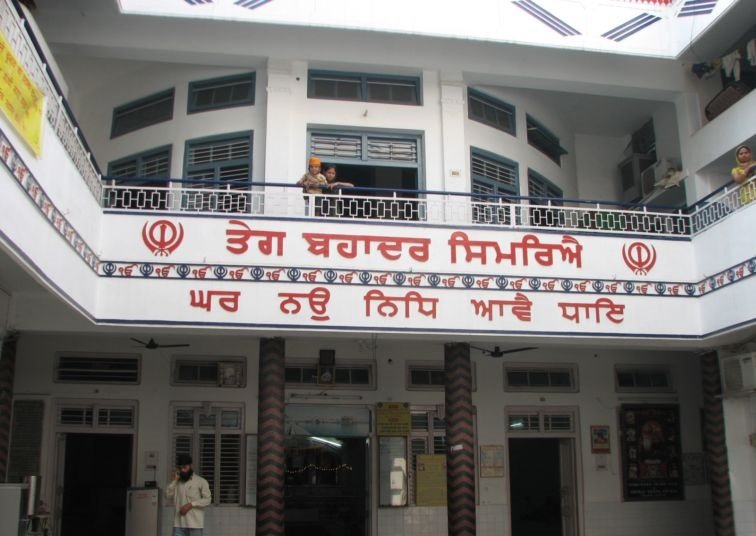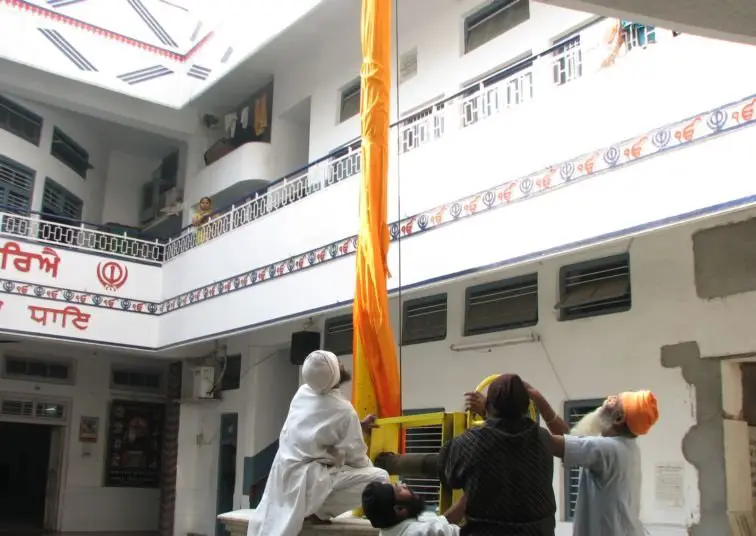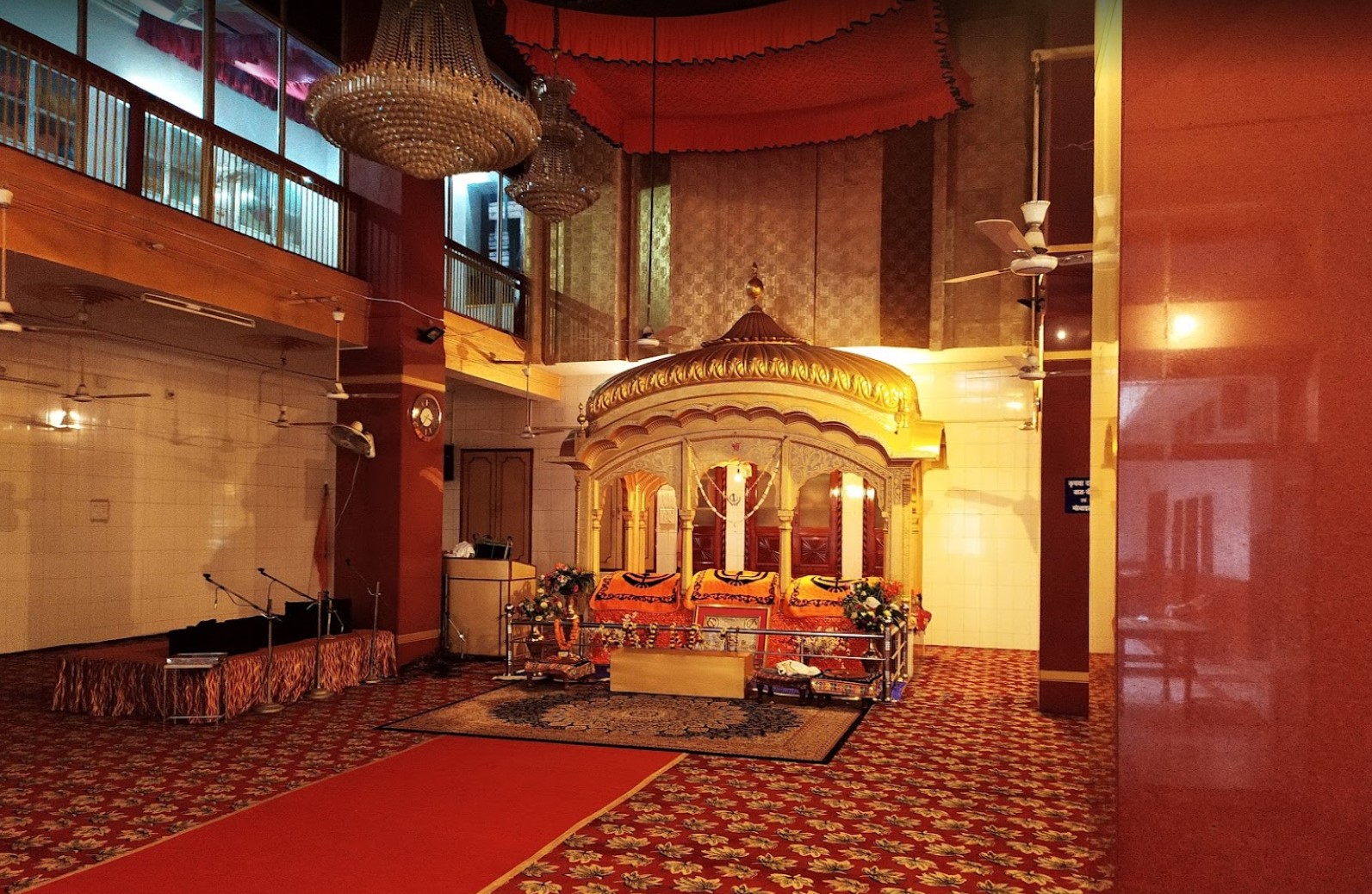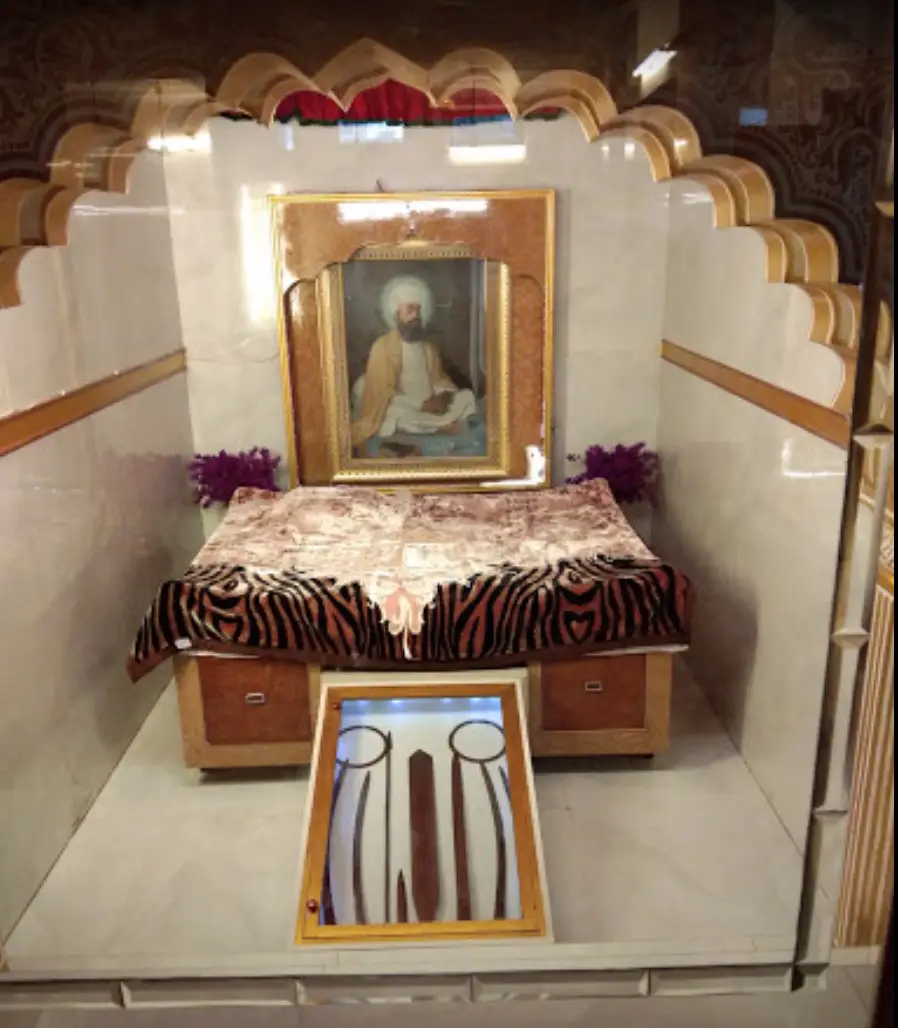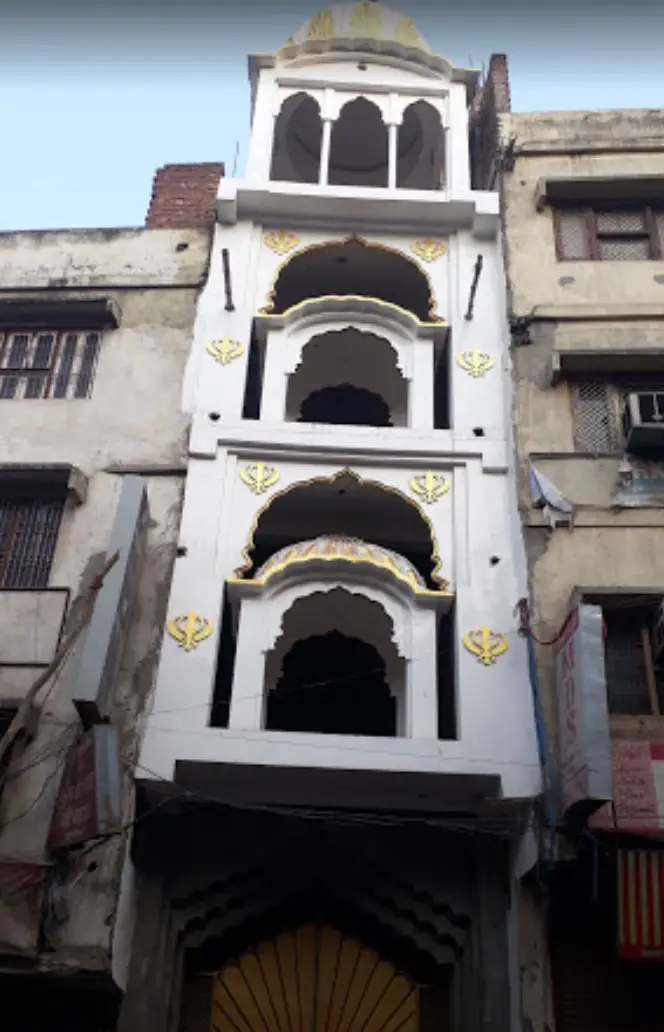Gurudwara Bari Sangat Sri Guru Tegh Bahadur-Varanasi
Gurdwara Bari Sangat Sri Guru Tegh Bahadur – The Gurdwara in Nichi Bagh area is the oldest and most important sangat at Benaras judging from old hukamnamas and other relics possessed by it. At the time of Guru Tegh Bahdur’s visit, the Sangat was headed by Bhai Jawehri lal, the masand. The Guru stayed in a house belonging to Bhai Kalyan Mal. It is the site of this house which is occupied by the Gurdwara Bari Sangat now. Its present three-storey building, which replaced the one constructed by Maharaja Narinder Singh of Patiala in 1854, was constructed during the 1950s. The sanctum is at one end of a spacious high-ceilinged, rectangular hall on the ground floor. All around the interior of the hall is a wide gallery and a number of cupboards for use by pilgrims.
Within the congregation hall there are two more shrines – a small room called Tap Asthan represents the closet where Guru Tegh Bahadur sat in solitary meditation, and a narrow well called Baoli Ganga Pargat (lit. well making the Ganges manifest). There is a popular legend related to the latter. It is said that one morning as Guru Tegh Bahadur was meditating in the Tap Asthan, Bhai Kalyan Mal invited him to a dip in the holy Ganges. The Guru remarked, God’s Name is the holiest of all. Rather than a worshipper of God go seeking holiness in the waters of Ganges, the Ganges would come to be blessed by the bhakias touch. Seeing Kalyan Mal puzzled by his utterance, the Guru asked him to lift a nearby stone. As soon as Kalyan Mal did so, a spring of river-water appeared. This spring is the present Baoli Ganga Pargat. Two very old pairs of shoes, one once worn by Guru Tegh bahadur and the other by the young Sahibzada Gobind Das, and a chola (long, loose gown) once used by Guru Tegh Bahadur are displayed in glass cupboards. The hukamnamas, seventeen in number are kept separately in the office of the committee that manages this Gurdwara.
Gurdwara Vaddi, also known as Bari Sangat Guru Tegh Bahadur Nichi Bagh, is situated in Mohalla Aas Bhairon of Varanasi town in Uttar Pradesh. It has been built to preserve the memory of the stay of Guru Tegh Bahadur Sahib. The present building of this Gurdwara was built in the latter half of the 19th century and many modifications were done during repeated renovations. This place is also much sanctified by the visit of Guru Gobind Singh Sahib in 1670 on his way from Patna to Lakhnaur. It is assumed that Guru Nanak Sahib, the founder of Sikhism, too had visited this site.
The main attractions here include a spring, Baoli Charan Ganga, and a basement called Tap Asthan, where Guru Sahib used to meditate. There are several Hukamnamas (Guru’s letters) as well as other relics belonging to Guru Sahib. These include 17 Hukamnamas, a pair of shoes and two Cholas (cloaks) belonging to Guru Tegh Bahadur Sahib and a pair of shoes belonging to Guru Gobind Singh Sahib.
Varanasi City Railway Station and Varanasi Junction Railway Station are nearbyrailway stations. Varanasi Airport serves this area.
Probably since the visit of Guru Nanak but certainly since the time of Bhai Gurdas, a Sikh sangat had been in existence in Varanasi. When Guru Tegh Bahadur came here in 1666, he was received by the sangated by BhaiJavehari Mall, the local Sikh minister. The Guru was put up in the house of Bhai Kalyan Mall, the site of the present Gurdwara Bari Sangat where he is said to have stayed for several months. Bhai Gurbakhsh, the masand atJaunpur, came with his sarig’atto offer obeisance. Bhai Gurbakhsh. a practised musician, pleased the Guru with his melodious kirtan and gave Bhai Gurbakhsh a mrdang (a drum) as a mark of his appreciation and blessing. When he was not preaching or meeting his devotees and visitors, Guru Tegh Bahadur meditated in a room still kept apart as his Tap Asthan. Once, it is said, Bhai Kalyan Mall came to the Guru’s Tap Asthan early in the morning and invited him to a dip in the holy Ganga, that being an auspicious day of die month. The Guru, as the tradition goes, asked him to lift a stone lying near by. Immediately, a spring of river water gushed forth. The spring is still preserved in the form of a narrow well, called Baoli Ganga Pargat, inside the main hall of the Gurdwara, and its water is used for drinking. People believe in its curative properties. In the Gurdwara are preserved two cloaks (cholas) and a pair of shoes belonging to the Guru. The shoes have since decayed with only the soles left. Guru Gobind Singh also visited this shrine in 1670 when as a child he was being escorted from Patna to the Punjab. A pair of his shoes is also preserved here as a relic. The Bari Sangat at Varanasi remained an important Sikh centre. Seventeen hukamnamasofGuru Tegh Bahadur, Guru Gobind Singh and Mata Sahib Devan addressed to the Sangat are preserved in the Gurdwara.
